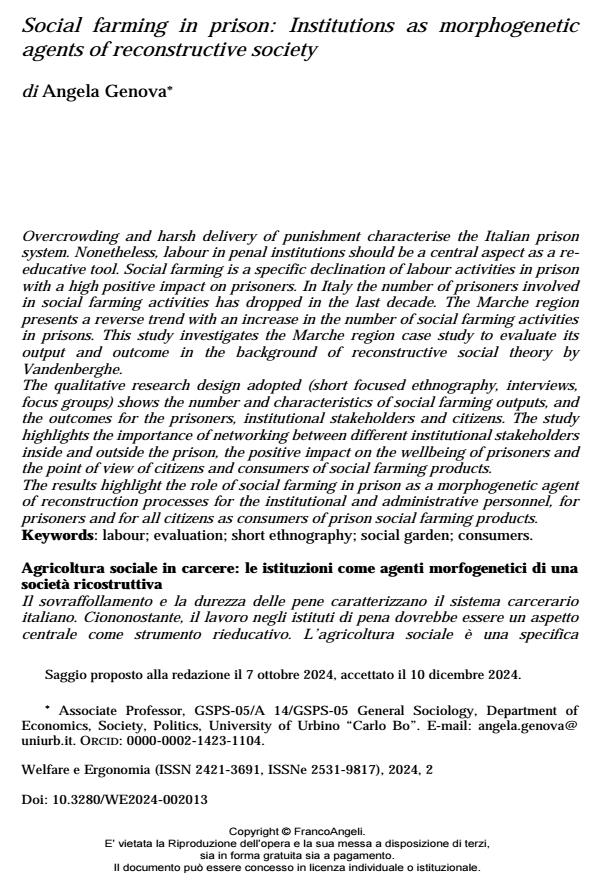Agricoltura sociale in carcere: le istituzioni come agenti morfogenetici di una società ricostruttiva
Journal title WELFARE E ERGONOMIA
Author/s Angela Genova
Publishing Year 2025 Issue 2024/2
Language English Pages 17 P. 191-207 File size 109 KB
DOI 10.3280/WE2024-002013
DOI is like a bar code for intellectual property: to have more infomation
click here
Below, you can see the article first page
If you want to buy this article in PDF format, you can do it, following the instructions to buy download credits

FrancoAngeli is member of Publishers International Linking Association, Inc (PILA), a not-for-profit association which run the CrossRef service enabling links to and from online scholarly content.
Overcrowding and harsh delivery of punishment characterise the Italian prison system. Nonetheless, labour in penal institutions should be a central aspect as a re-educative tool. Social farming is a specific declination of labour activities in prison with a high positive impact on prisoners. In Italy the number of prisoners involved in social farming activities has dropped in the last decade. The Marche region presents a reverse trend with an increase in the number of social farming activities in prisons. This study investigates the Marche region case study to evaluate its output and outcome in the background of reconstructive social theory by Vandenberghe. The qualitative research design adopted (short focused ethnography, interviews, focus groups) shows the number and characteristics of social farming outputs, and the outcomes for the prisoners, institutional stakeholders and citizens. The study highlights the importance of networking between different institutional stakeholders inside and outside the prison, the positive impact on the wellbeing of prisoners and the point of view of citizens and consumers of social farming products. The results highlight the role of social farming in prison as a morphogenetic agent of reconstruction processes for the institutional and administrative personnel, for prisoners and for all citizens as consumers of prison social farming products. <a href="https://static.francoangeli.it/fa-contenuti/riviste/riviste_allegati/we/we2024-002013-la.pdf" target="_blank" >Long abstract </a>
Keywords: labour; evaluation; short ethnography; social garden; consumers.
Angela Genova, Social farming in prison: Institutions as morphogenetic agents of reconstructive society in "WELFARE E ERGONOMIA" 2/2024, pp 191-207, DOI: 10.3280/WE2024-002013